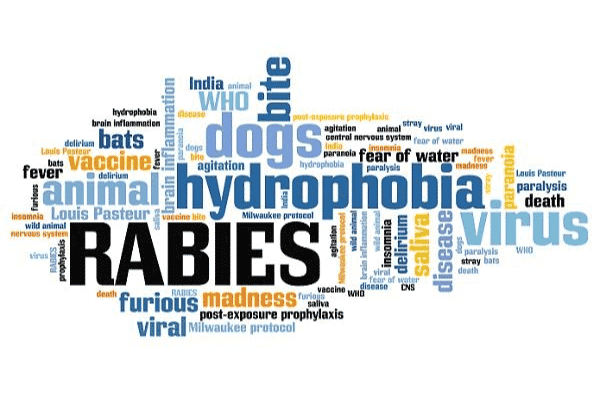Most dogs do not attack unless they are provoked. However, a dog with rabies becomes easily aggravated and is more apt to attack anyone, including family. Spotting a dog that is rabid is difficult at times, while other dogs show clear symptoms of the infection. It is important that you and your children know the signs of rabies so that you can avoid a rabid dog, but also know to report that dog to animal control as soon as possible.
What is Rabies?
Rabies is one of the older infectious diseases that typically afflicts bats, raccoons, and foxes. However, a dog can contract the disease if it is met by an infected animal. The viral disease affects the dog’s nervous system and spreads rapidly. Most dogs are immune to rabies because of annual vaccine requirements. However, the vaccines are not always effective and if a dog is not regularly vaccinated (or was never vaccinated), it is susceptible to rabies.
Early Infection Symptoms
Dogs show early infection symptoms, which last 2 to 10 days after initial exposure. These symptoms appear as a general sickness, and it is the best time to examine your dog for any signs of bite. At this stage, your dog may still receive treatment from the vet and survive. During the early stages, a dog is unlikely to attack. However, a dog may still bite when not feeling well.
Early symptoms include:
- Restlessness
- Pain
- Irritability
- Fever or chills
- Feeling tired or uncomfortable
- Fear of bright lights
- Vomiting or gastrointestinal problems
- Limited hunger or thirst
- Cough
Later Symptoms
The mild form of rabies, known as paralytic form, is the most common. It lasts three to seven days. This is the stage where a dog foams at the mouth and paralyzes. The animal appears sick, confused, irritable, tired, and possibly may make barking noises that do not sound like a normal bark.
If the dog has contracted the aggressive form of rabies, which also lasts three to seven days, the dog is excited and overly aggressive. Other symptoms you may notice include:
- Foaming at the mouth and excessive salivation.
- Fear of water. The dog may panic at the sight of water.
- Extreme aggressiveness. The dog will show teeth and appear as though it is going to bite.
- Extreme irritability, may growl, attack, or bite at the slightest provocation.
- Restlessness and discomfort.
- Chewing on rocks, their own body, and other items that are not normally chewed on.
Is Rabies Treatable?
In some instances, yes. In others, the dog is euthanized. If the disease is allowed to progress too far or if the dog has never been vaccinated for rabies, then there is not much that a veterinarian can do for the dog other than make it comfortable or euthanize it. If, however, the dog has vaccines, the vet can give a booster and then monitor the dog closely for 45 days. If the disease clears itself up, the dog is released.
What if a Rabid Dog Bites You?
If bitten by a rabid dog, seek medical treatment right away. Rabies may not appear for one to two months after infection, but by then it has already attacked nervous system cells. Once the virus has intruded the brain, there is no treatment. After the rabies disease is introduced, a human will require anti-rabies shots, which are given over a course of two weeks and consists of five shots.
The first shot is administered at the bite site, while the remaining shots are given in the arm. The process of recovery is painful and only worsens the experience of being attacked in the first place.
If you were bitten by a rabid dog, you may hold that dog’s owner liable for your injuries and the costs associated with rabies treatment. Contact Jeffrey H. Penneys, Esq. now to explore your options at 215-771-0430 (cell) or 215-987-3550 (office). You may also reach him via his online contact form.







